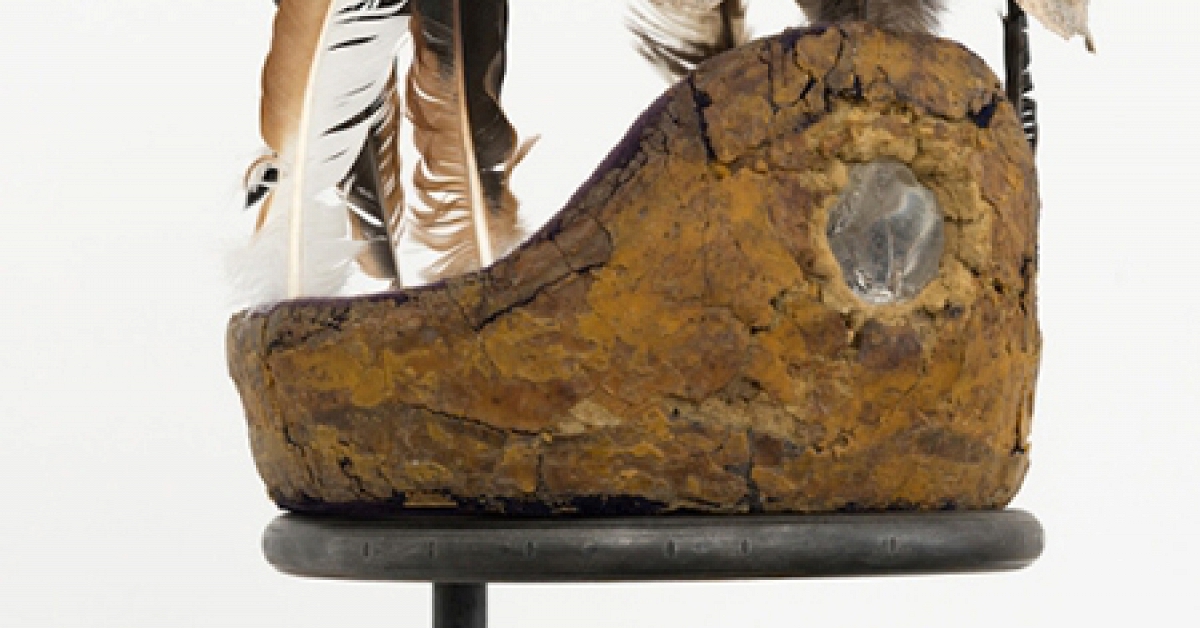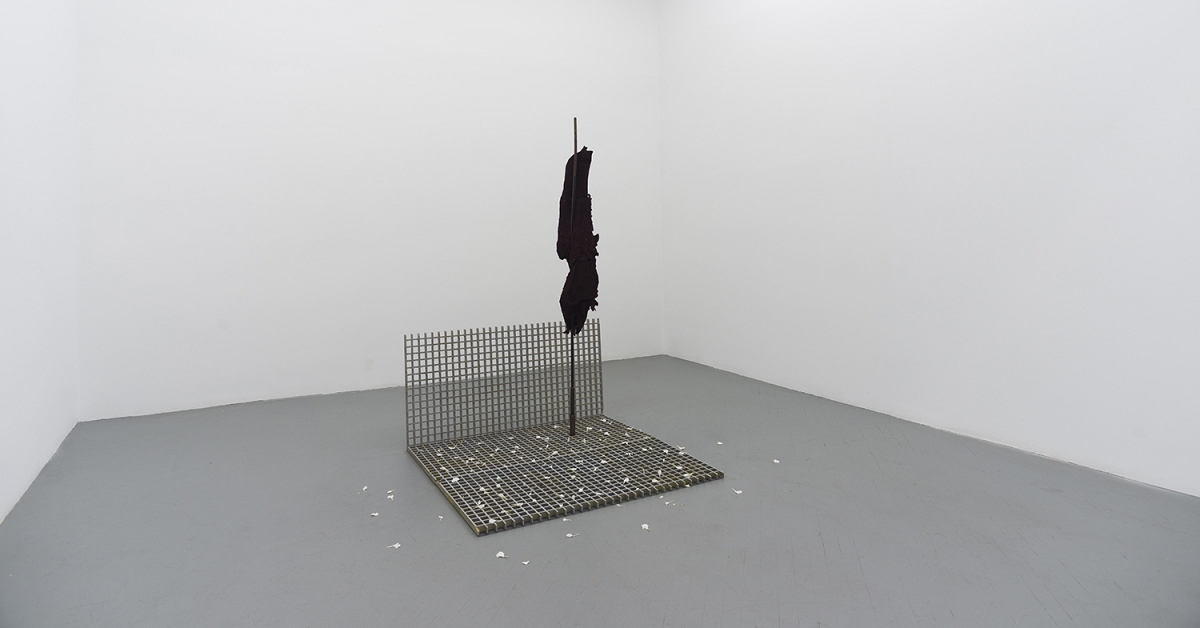Jennie C. Jones: New Compositions
The Brooklyn Rail / Oct 1, 2021 / by Ann C. Collins / Go to Original
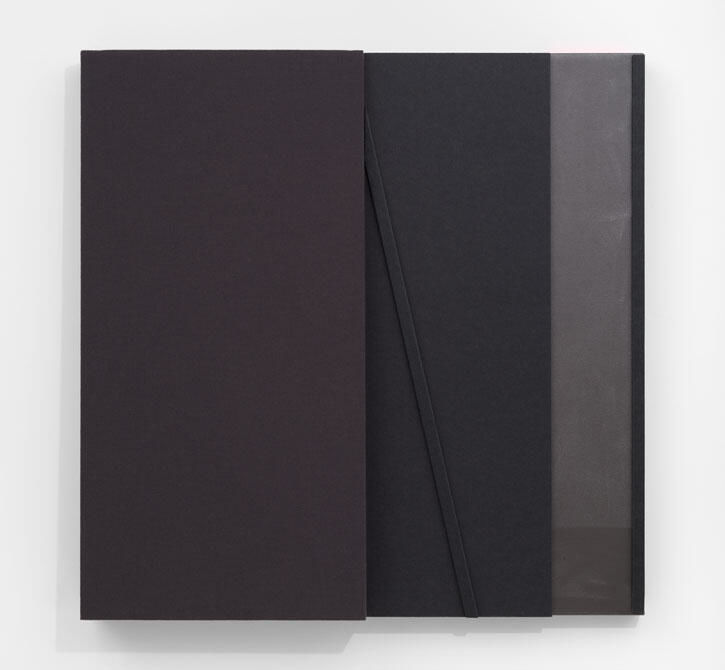
Jennie C. Jones, Dark Glissando, 2021. Architectural felt, acoustic panel, and acrylic on canvas, 51 x 48 x 4 inches. Courtesy Alexander Gray Associates.
Move in close to Soft, End, Measure (2021), and see what you hear. Constructing a large square from panels of wooly architectural felt coupled with an unbroken field of white paint, Jennie C. Jones quietly blurs the lines between senses: her monochromatic scale, which runs from palest ivory to heathery gray to charcoal, soothes the eyes, while the bands of thick felt muffle the sounds of the gallery. Its title a homonym of craft and musical terms, the work pulls apart notions of being, traversing the boundaries of visual and aural, object and surface, all while tempting the viewer/listener to run a hand along its textured planes. Pristine in its execution, close inspection reveals an impeccably placed patch of felt running along its edge, but also a series of imperfections (are they drips? scratches?) at the bottom of the canvas.
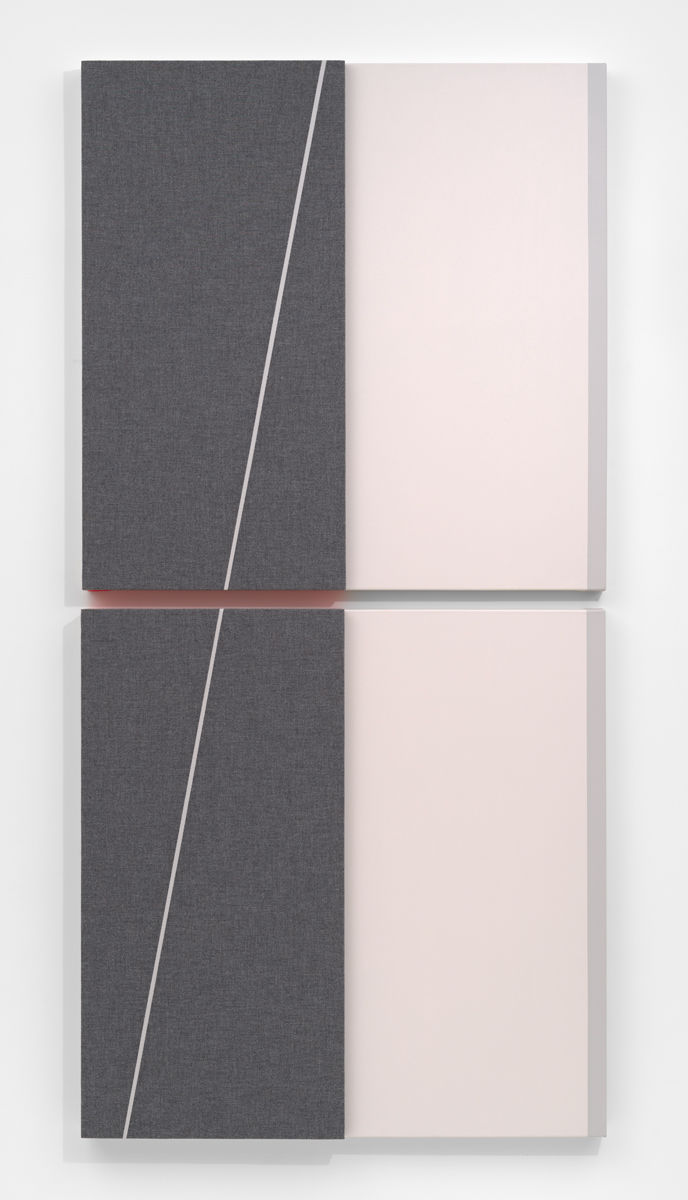
Jennie C. Jones, Fractured Extension, 2021. Acoustic panel and acrylic on canvas in two parts, 48 x 48 x 3 inches each. Courtesy Alexander Gray Associates.
Jennie C. Jones: New Compositions at Alexander Gray Associates brings together nine works of assemblage, collage, painting and ink on paper, all created this year, in which the artist deconstructs the minimalist form and the function of the object. Jones is most at home at the intersection of music and art history, building hybrids of the two while questioning her place within the legacy of the latter: How does the work of a Black woman artist fit into a tradition dominated by white men? Turning music into objects and objects into auditory experiences, she troubles the boundaries of any category in which she might be contained and does so with elegance and control.
The work feels streamlined, almost chic, but it is through this terse language that she makes her presence felt. In Dark Glissando, named for an upward or downward sliding between two notes, Jones arranges a black painted canvas layered with black architectural felt and two gray acoustic panels into a shadowy square. Step near and the work’s materials dampen the ambiance of the room, changing perceptions of space and time. Step away, and a stripe of scarlet paint that runs along the right side of the piece reveals itself, a shock of color almost hidden from view that once discovered invigorates the piece with its boldness. A strip of felt vertically dissects the composition, extending beyond its border at the top. Examining it closely, I notice one of the audio panels rises higher than the canvas, a slight asymmetry that creates a perception of the components slipping away from each other, soon to break form as this fixed object takes on a temporal quality.
Speed and movement are at play as well in the two small works on paper that make up Untitled (Segue Score) Diptych #2. Bands of paper washed with long brush strokes of gray and black paint pasted above and below the interconnected lines of musical staves are carried along without pause as one composition seems to leap into the next to form a visual representation of music that is both immediate and fast. In Graphite Movement #2, a single staff is obliterated by two vertical washes of black that rise side by side. Hanging her own mark-making over standard musical graphics, Jones’s notation calls to mind mid-century experimental music notations from composers such as John Cage or Steve Reich. Approaching it as a transposition of something aural, I can only think it is a durational movement of long howls.
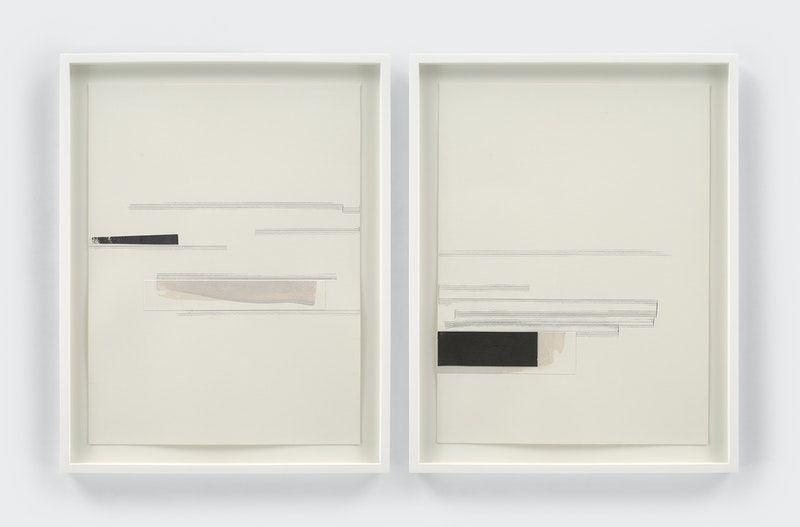
Jennie C. Jones, Untitled (Segue Score) Diptych #2, 2021. Collage, acrylic and ink on paper in two parts, 20 x 15 inches each. Courtesy Alexander Gray Associates.
Two squares, one hung directly above the other, make up Fractured Extension, each composed of acoustic panel on one side, and canvas painted an almost pinky-white on the other. An imperceptible stripe of gray paint runs down the right edge of both, more like a shadow creating an illusion of depth, while a painted diagonal line cuts down the top acoustic panel only to continue running through the bottom one. It is this line that brings the squares together, creating wholeness among separate objects. And yet another band of red paint hides in the seam of space that divides the two squares, bursting into view only when I step very close to peer between them. At first a peaceful assemblage of geometric contemplations, like all things Jones makes, it becomes something louder, more insistent, expanding into the space of the gallery, like music filling the air.




